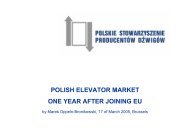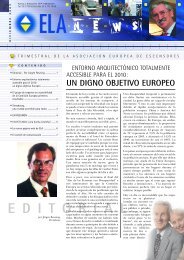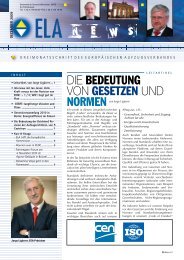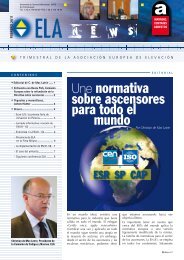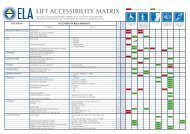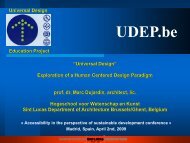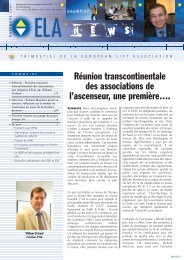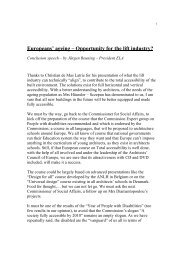WP6-Brochure-E4 brochure - ELA European Lift Association.
WP6-Brochure-E4 brochure - ELA European Lift Association.
WP6-Brochure-E4 brochure - ELA European Lift Association.
You also want an ePaper? Increase the reach of your titles
YUMPU automatically turns print PDFs into web optimized ePapers that Google loves.
1. Consider the best available technologies for each of the components which contribute to<br />
the stand‐by energy consumption:<br />
• LED Lighting (varies from 12 W for lift with load 320 kg to 18 W for 1,000 kg load lift)<br />
• Electronic Controllers (25 W)<br />
• Inverter (20 W)<br />
• Door operators (5 W)<br />
• Buttons and Displays<br />
2. Calculate the energy consumed annually by each lift using the Methodology defined in<br />
WP3 (Paragraph 7).<br />
3. Calculate the annual consumption for each technology used<br />
· <br />
4. Calculate the annual consumption for each sector, which is the sum of E stech for each of the<br />
technologies used (hydraulic, geared traction, gearless traction).<br />
BNAT – Best Not Available Technologies<br />
Best Not Available Technologies are state‐of‐the‐art technologies that are currently being<br />
developed, but that are not yet commercially available.<br />
1. Consider turning off of all non‐essential components which contribute to the stand‐by<br />
energy consumption when the lift is not in use.<br />
2. Consider putting the controller and inverter into sleep‐mode (1 W each).<br />
In the calculation of standby energy consumption, a 15 second period is added to the travel<br />
time to establish the time spent in sleep‐mode taking into account the time lapse before<br />
shutting down non‐essential components. In this scenario, the same assumptions and method<br />
as in scenario 1 are used.<br />
80



